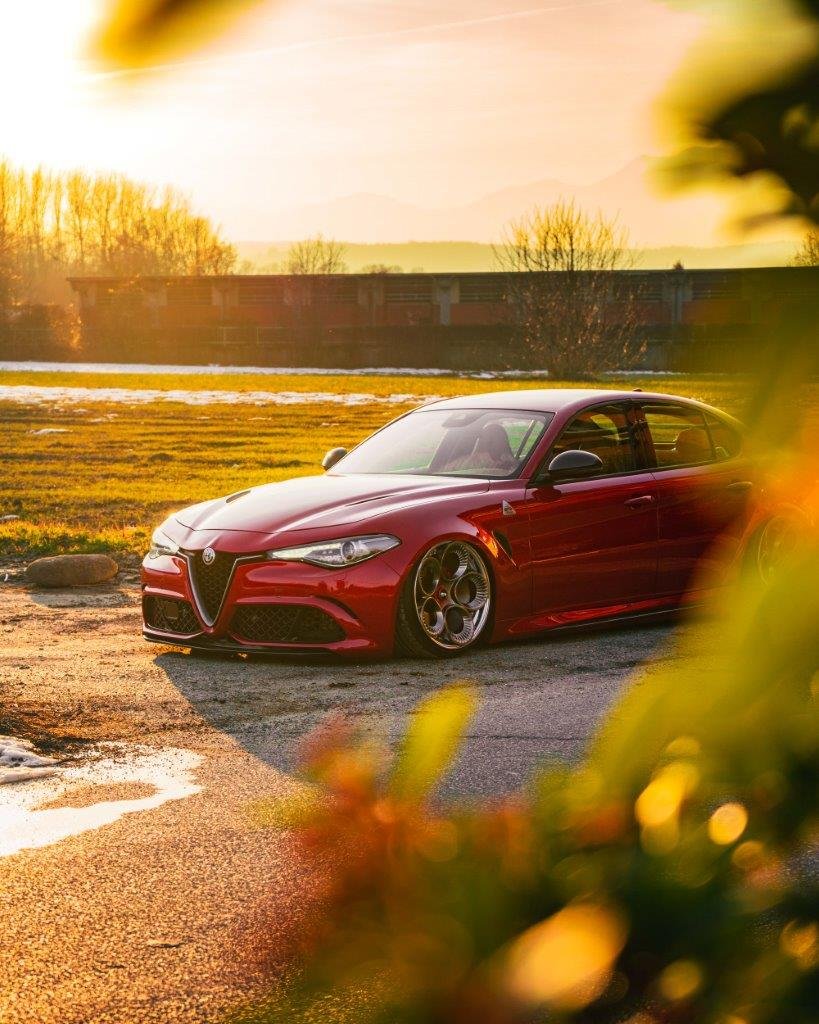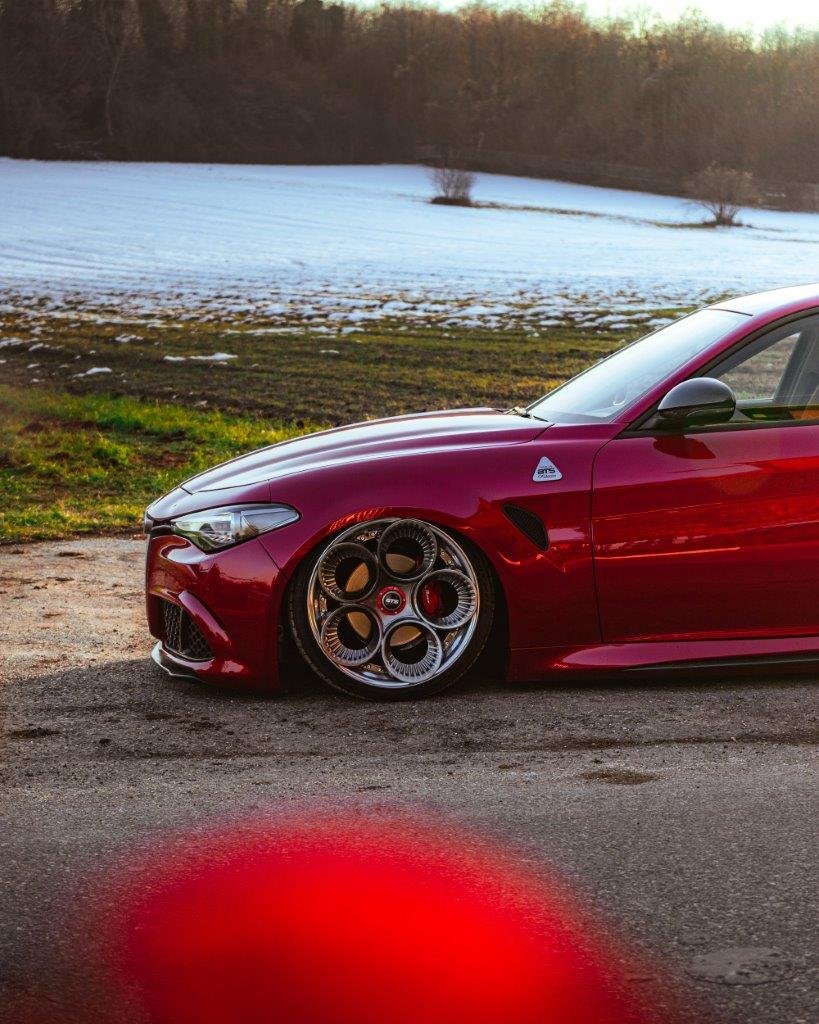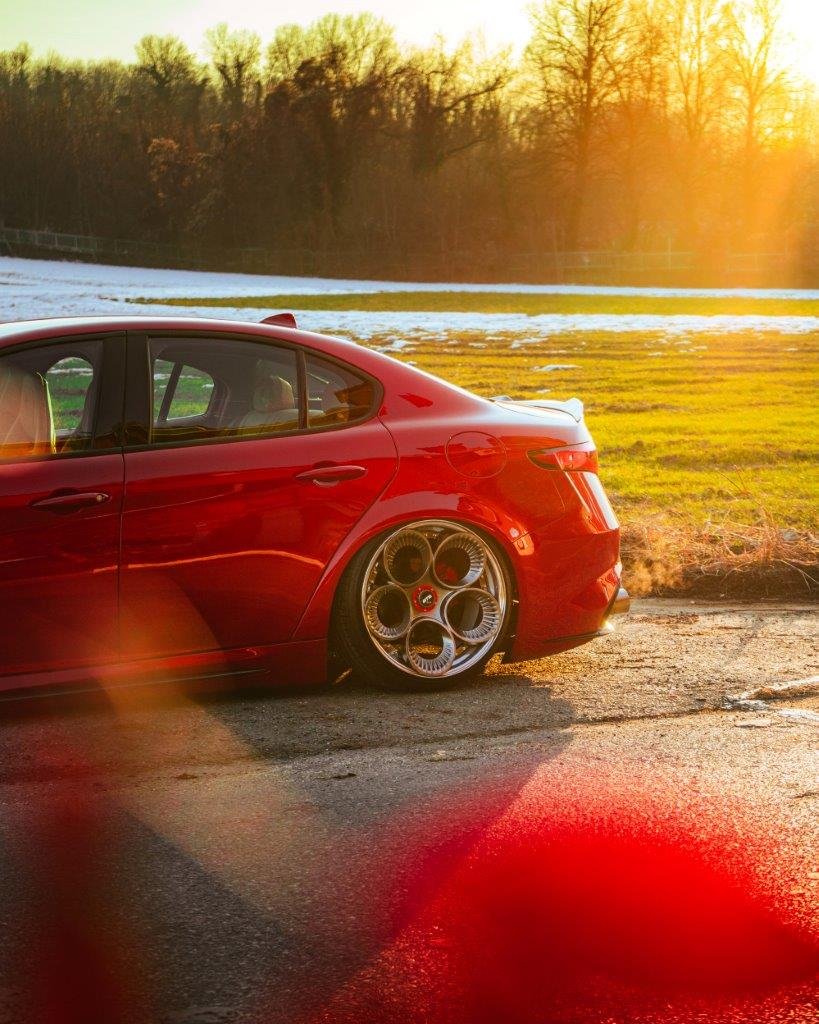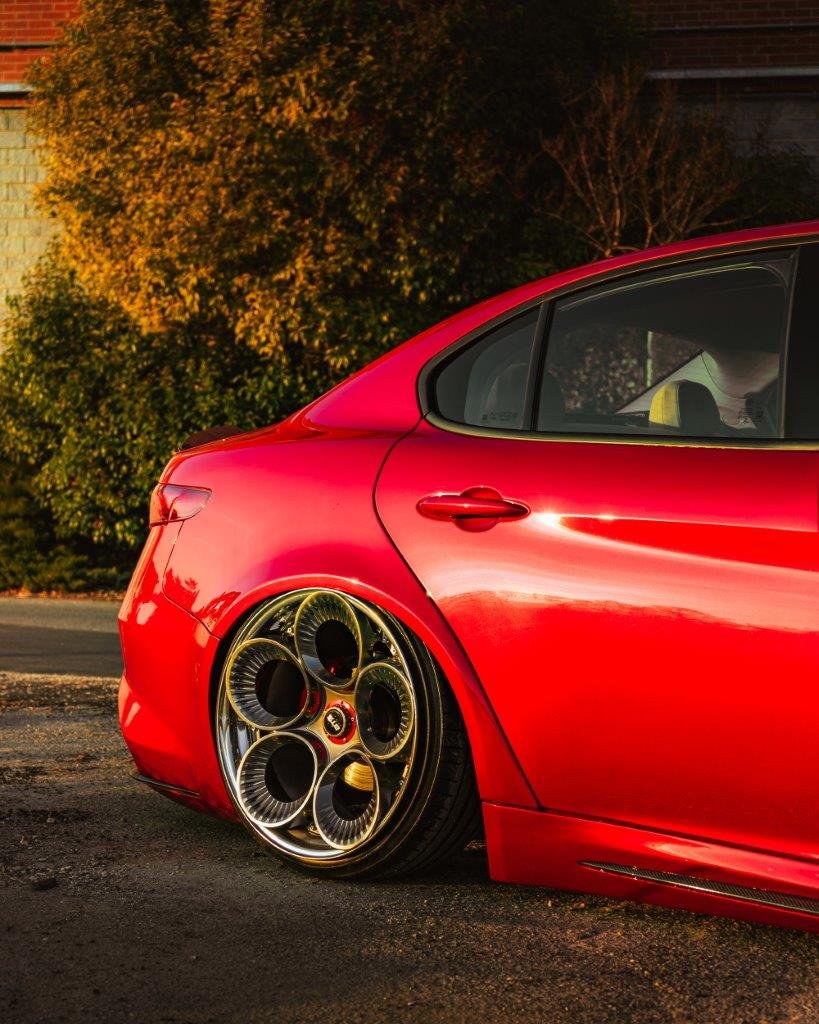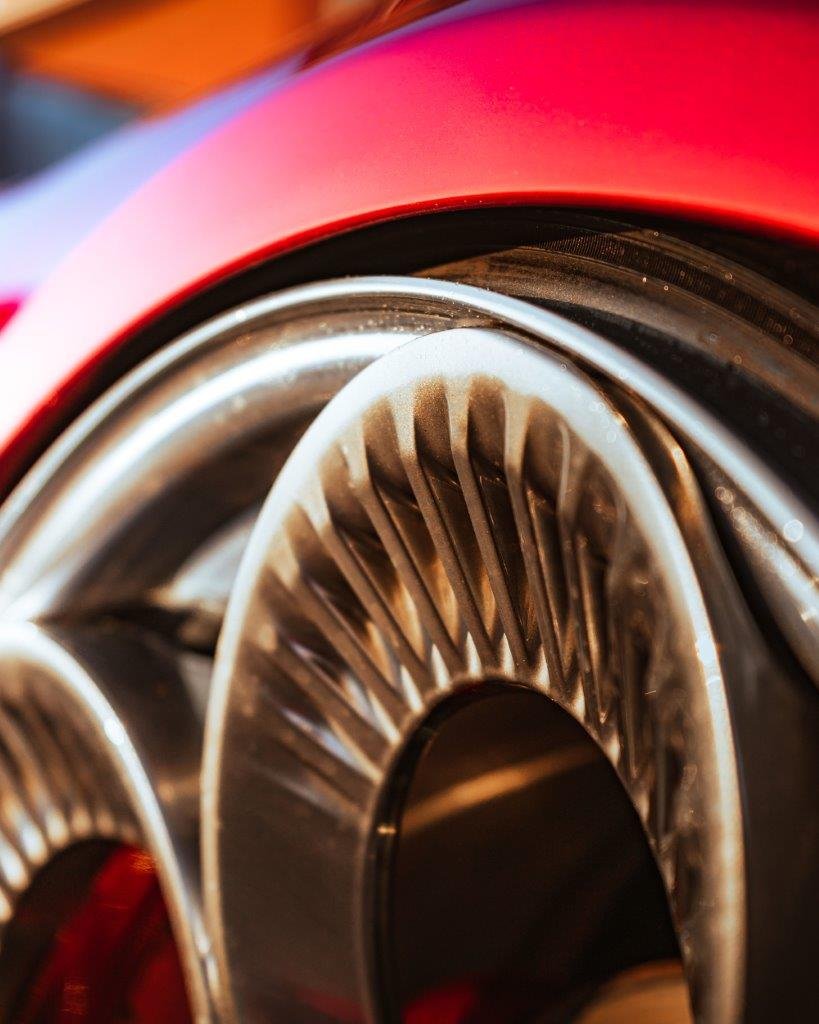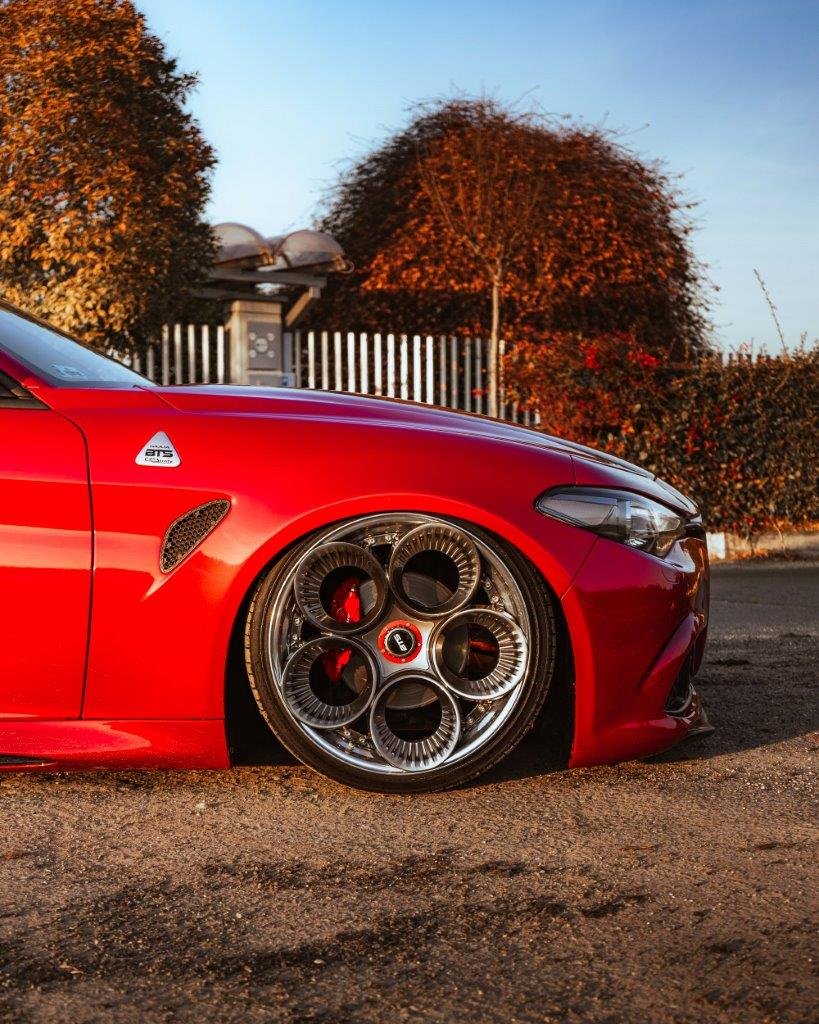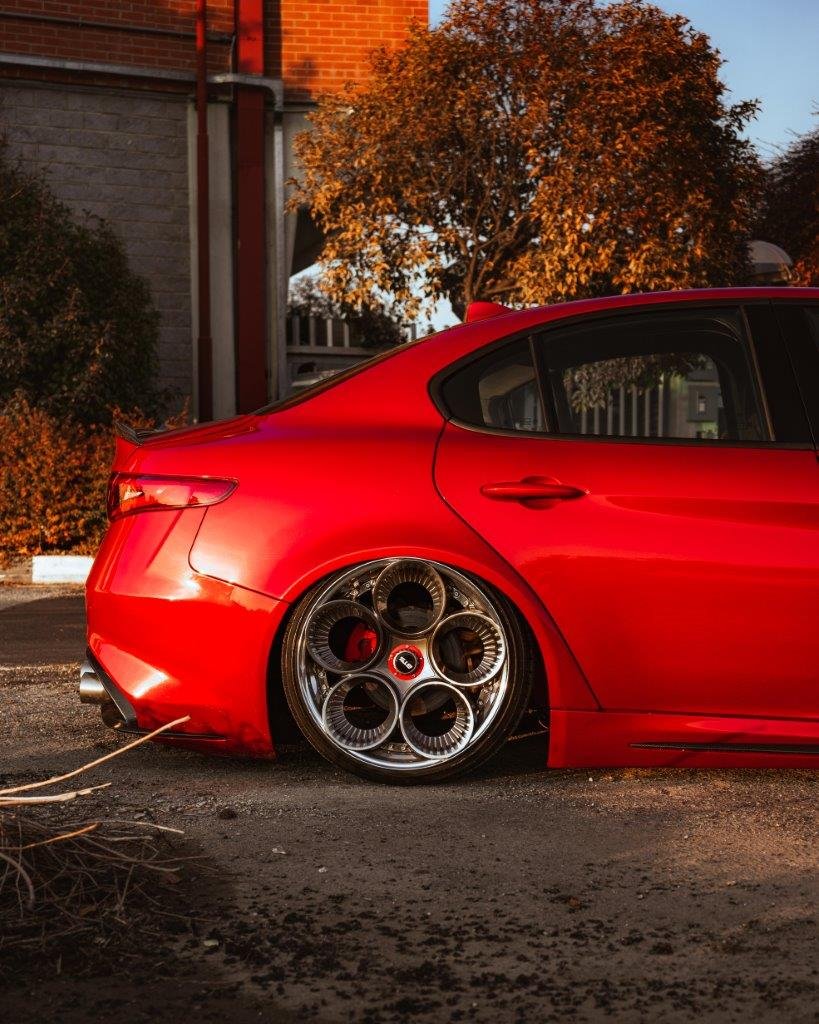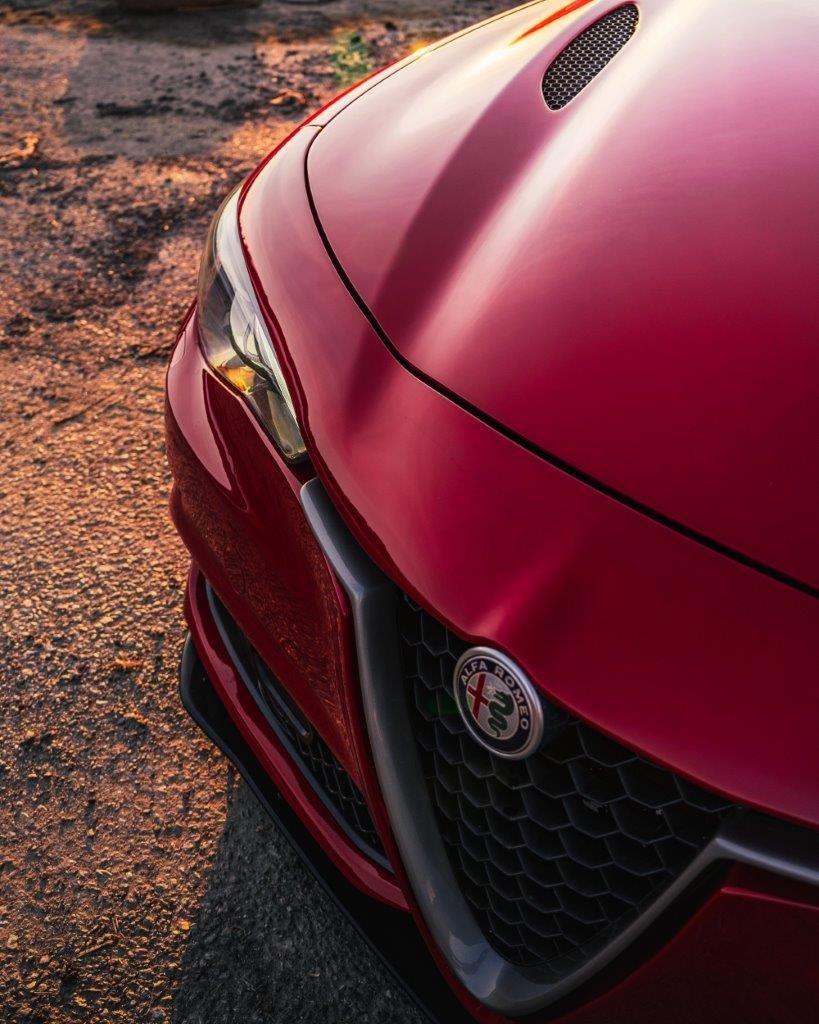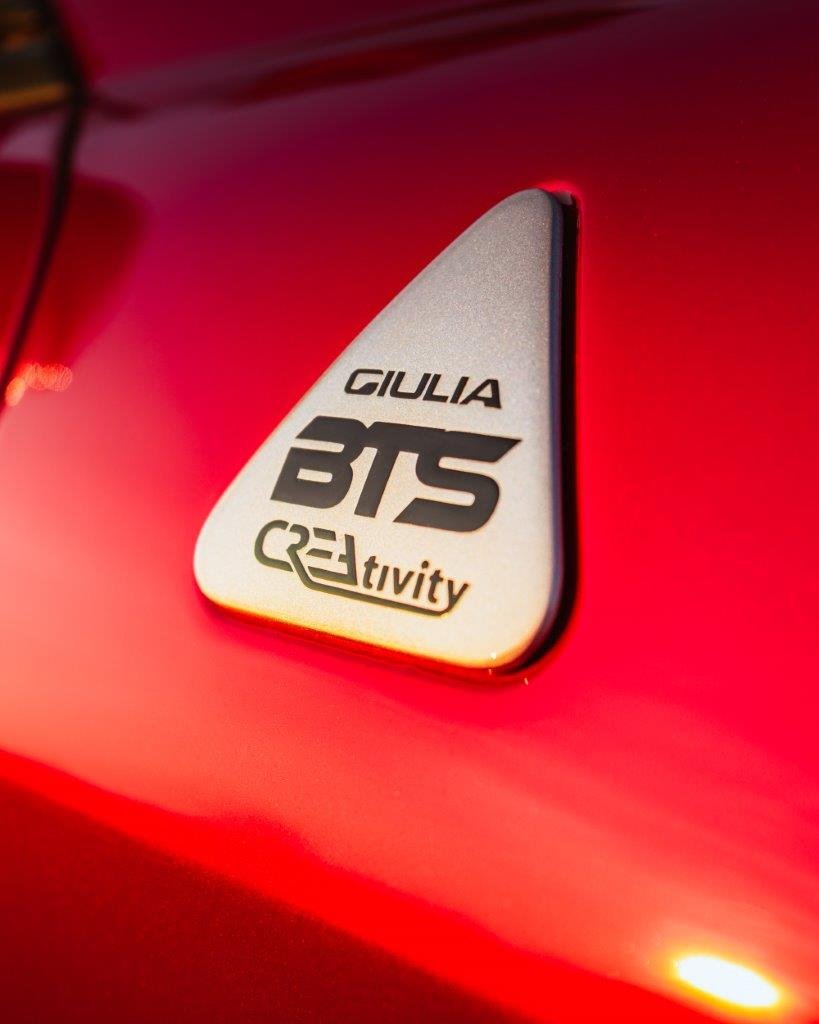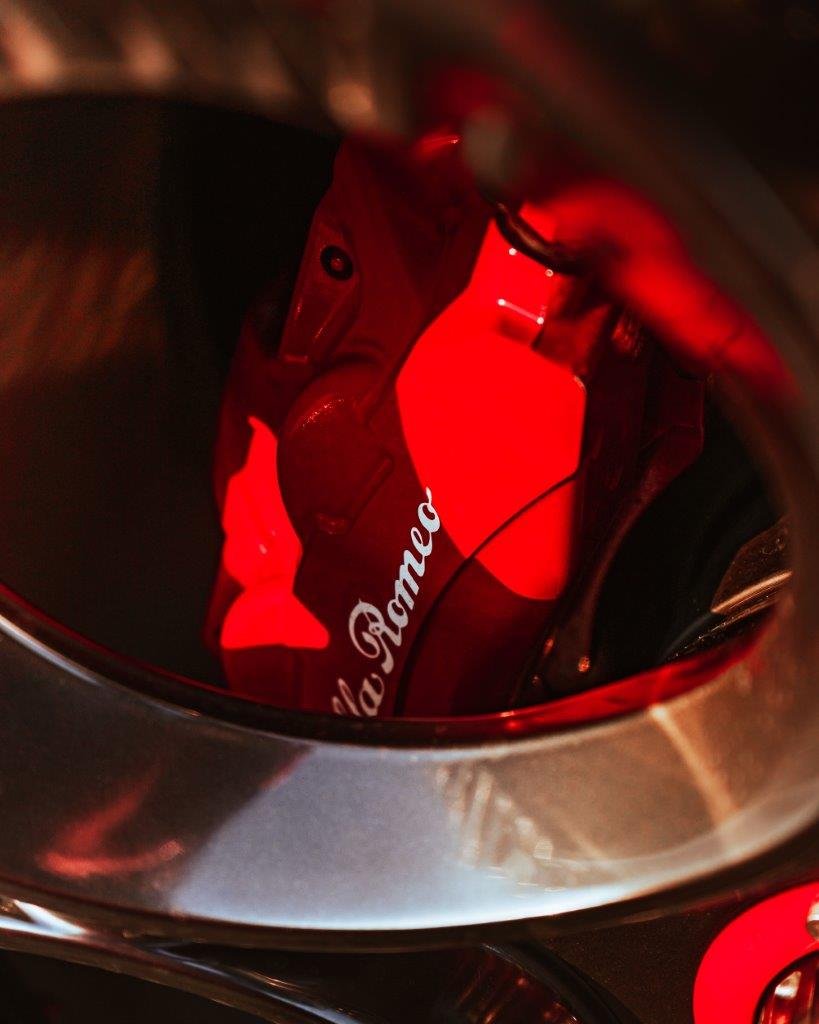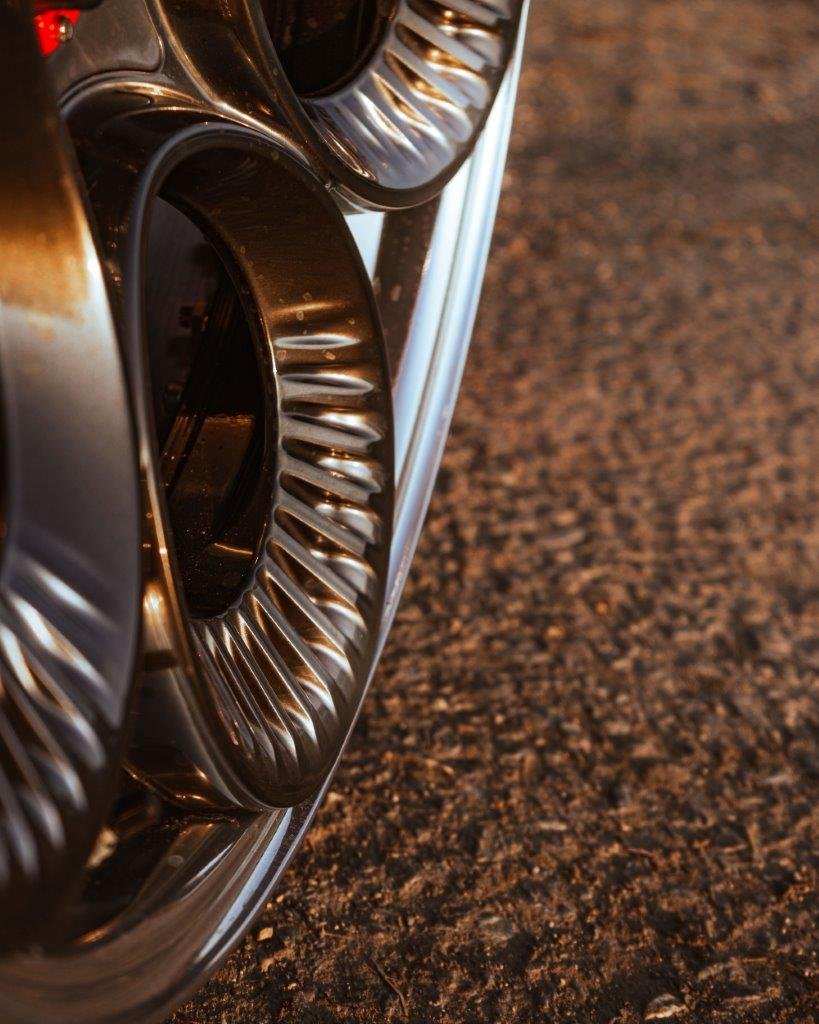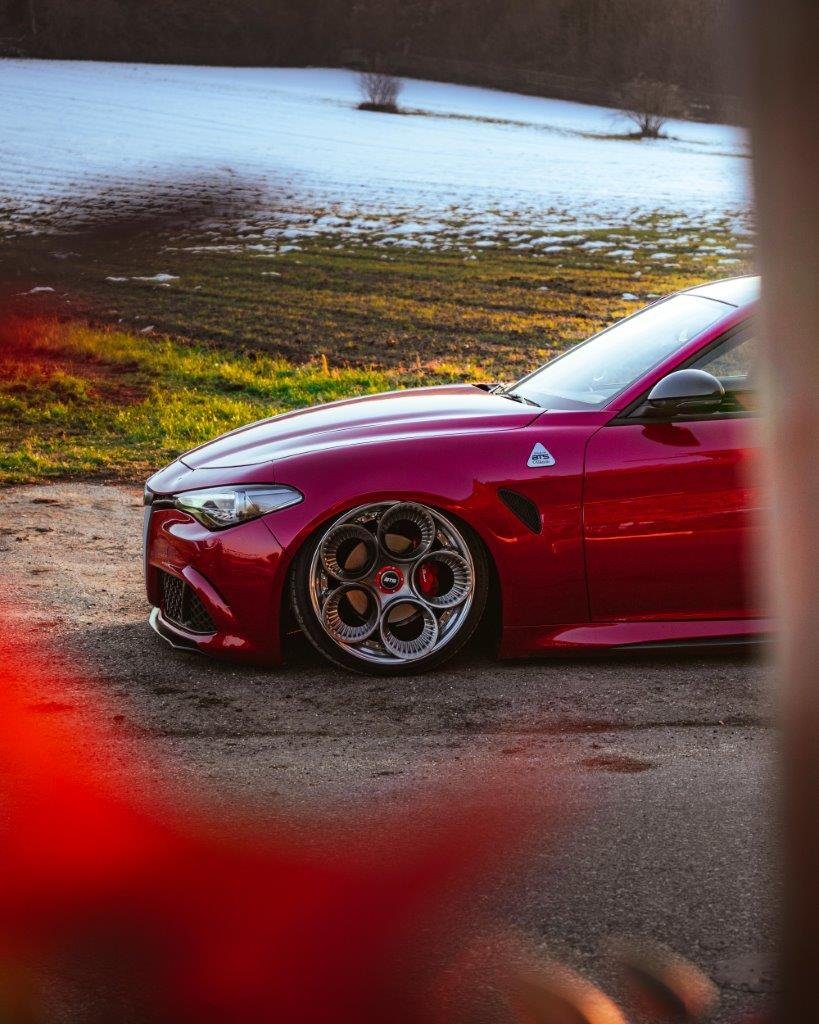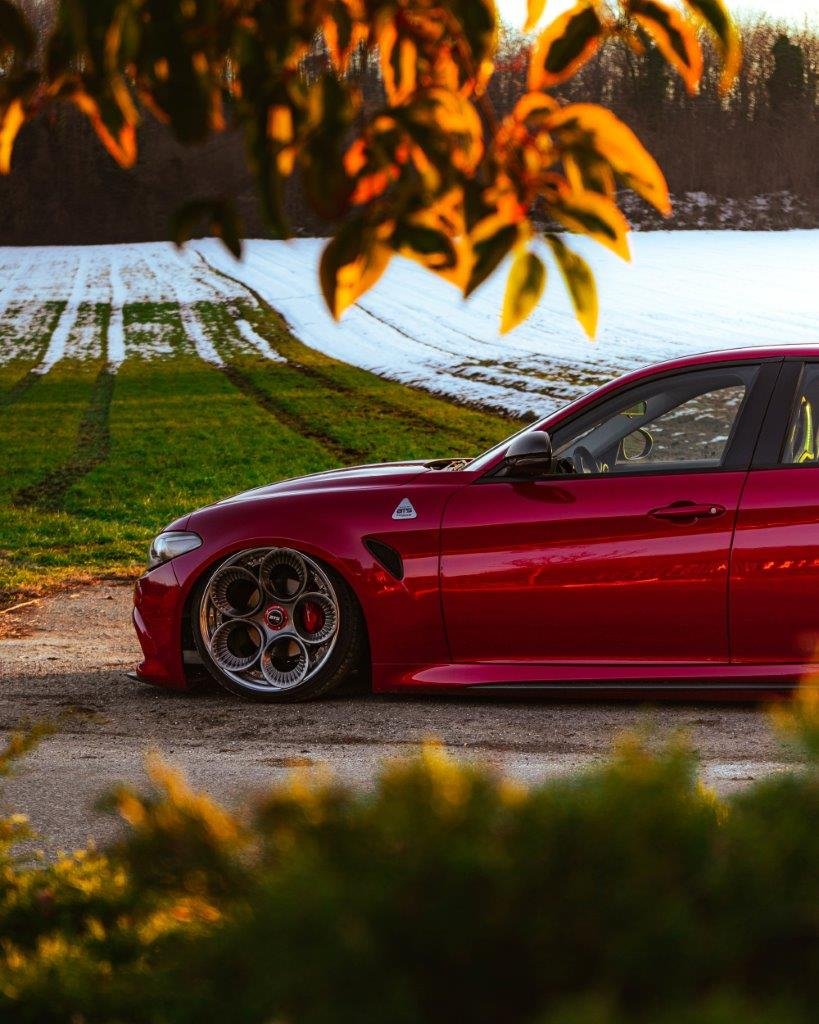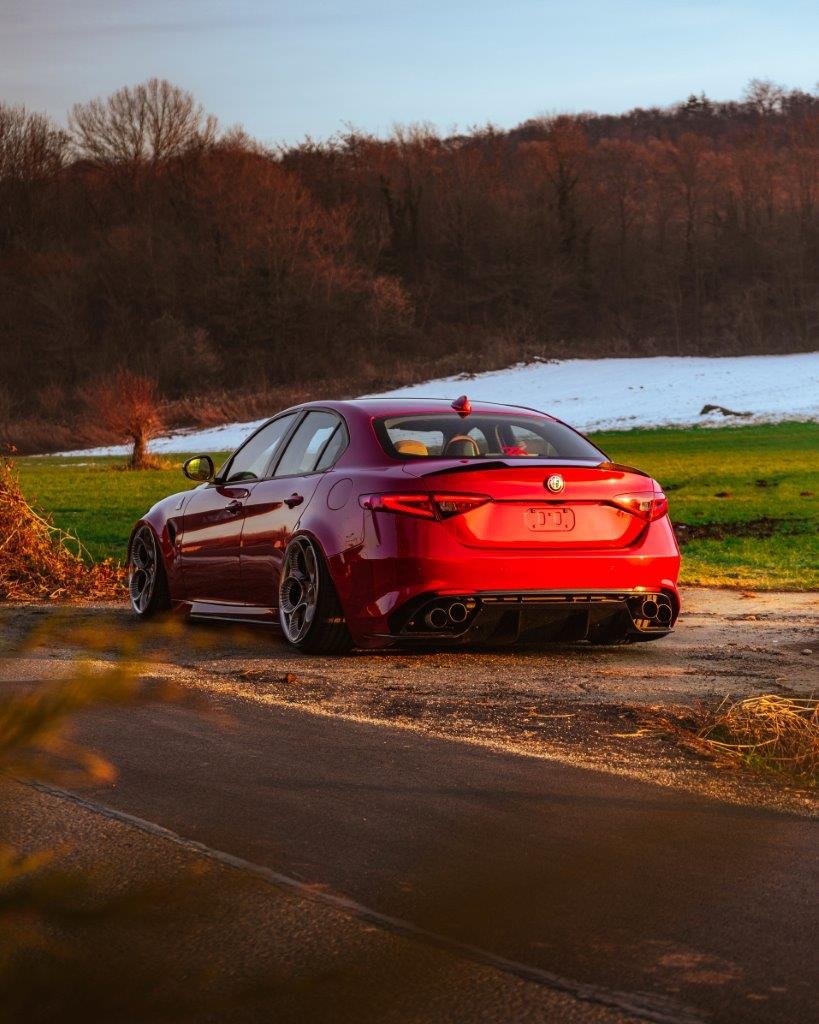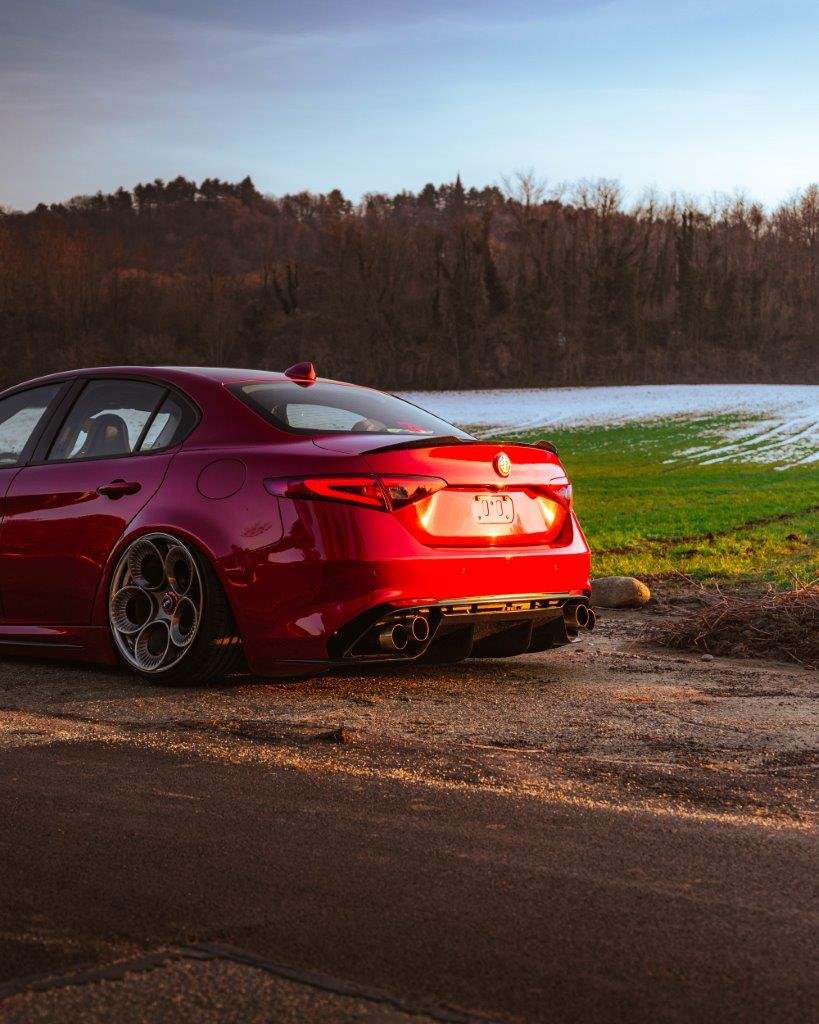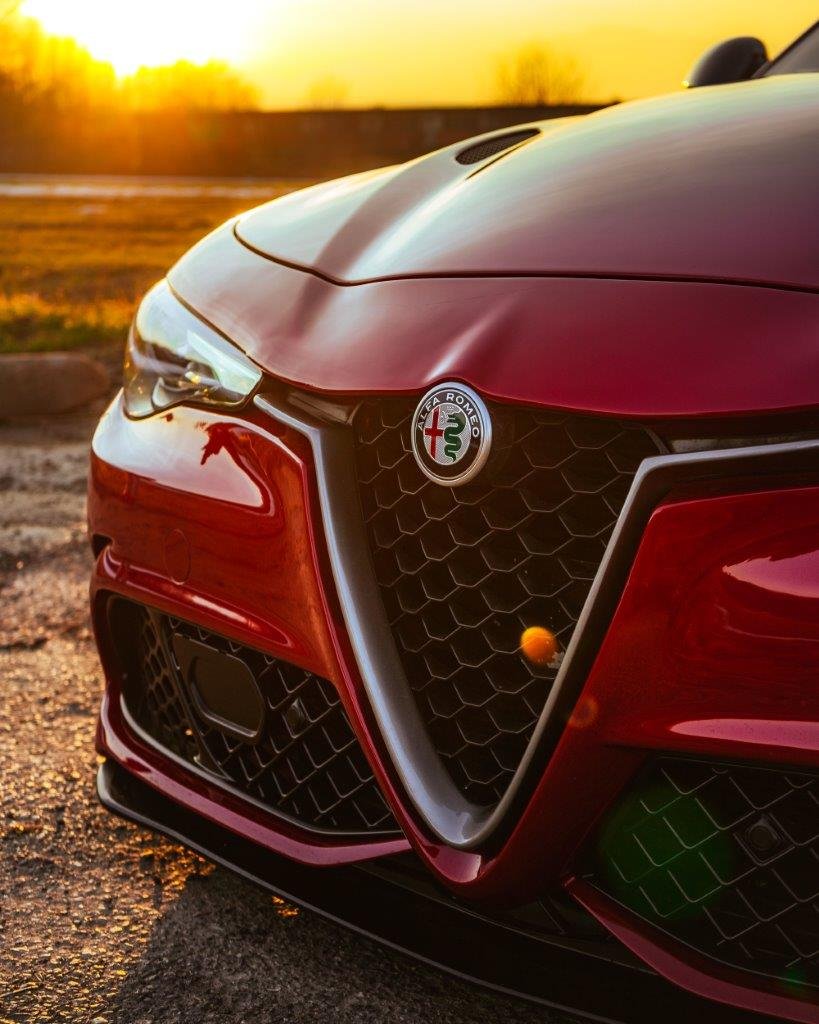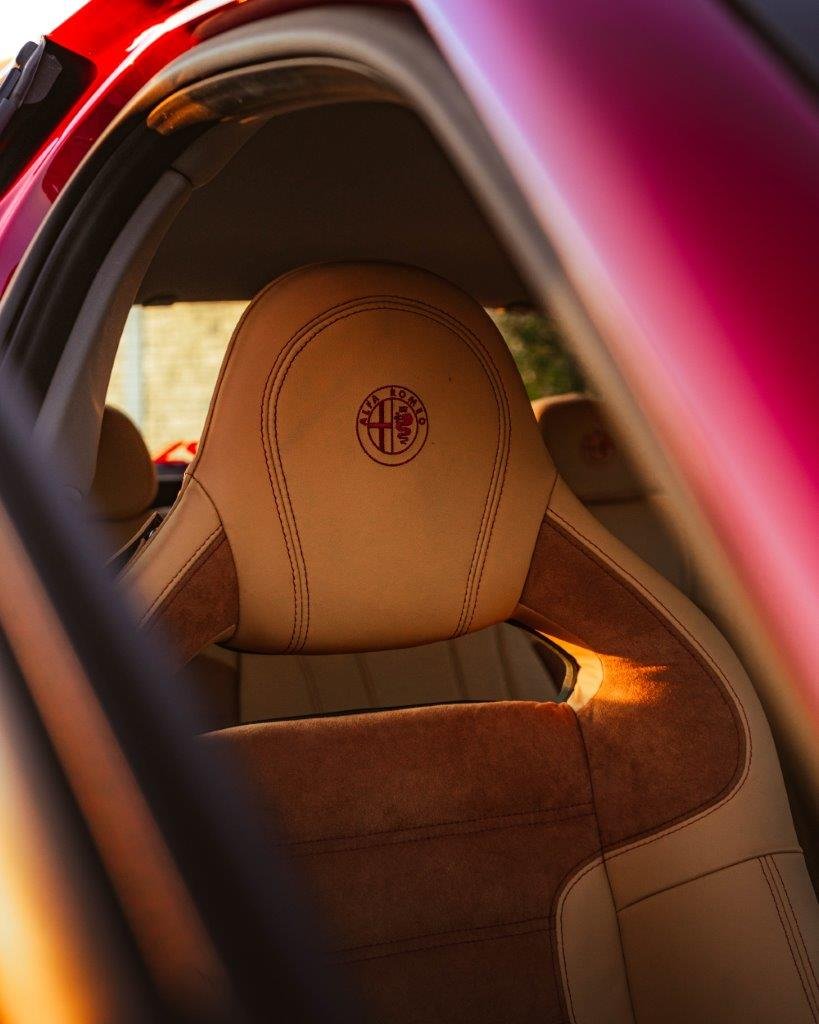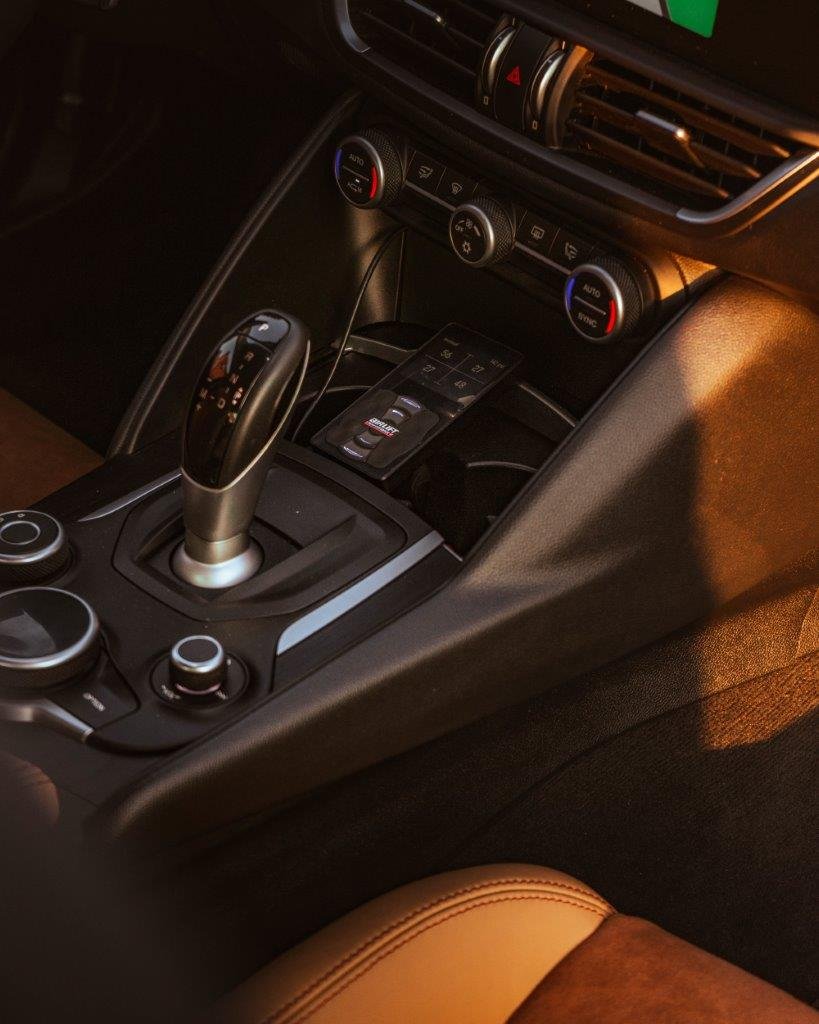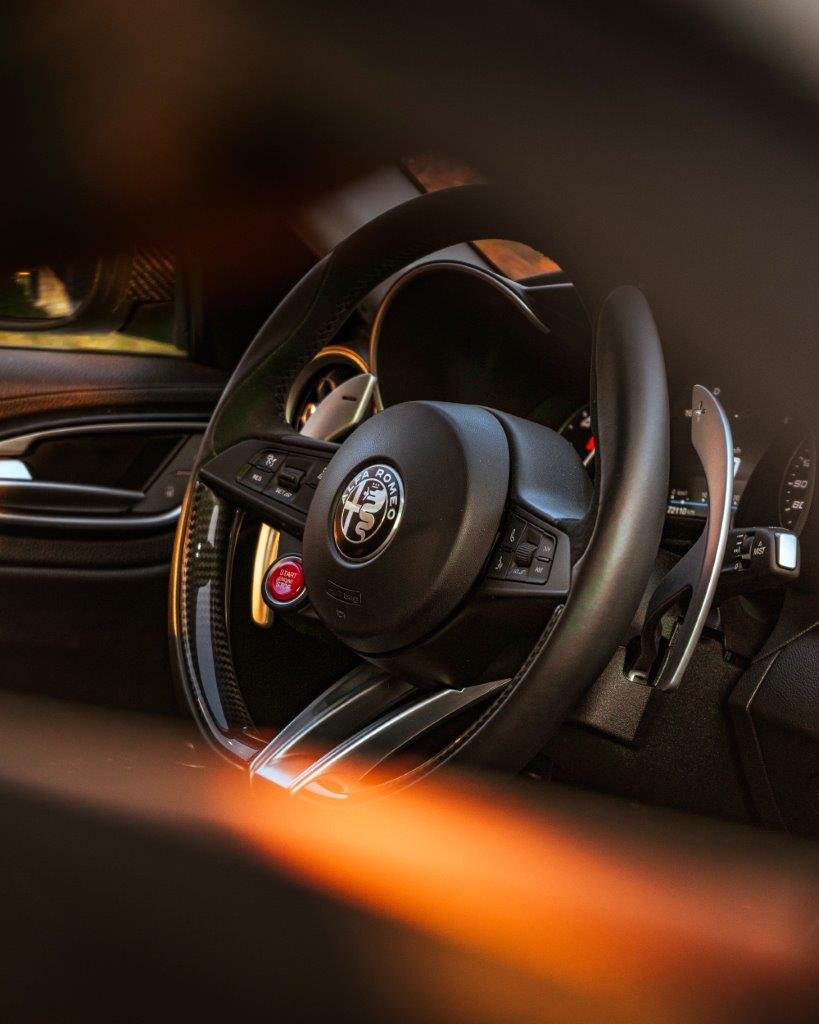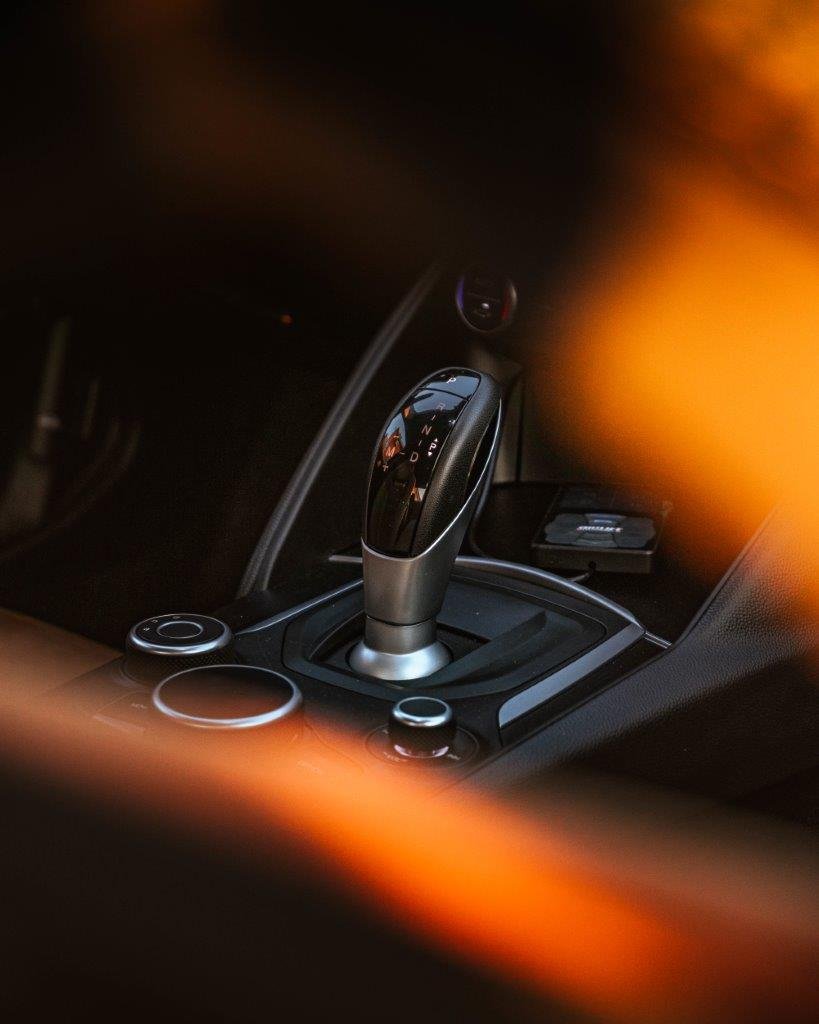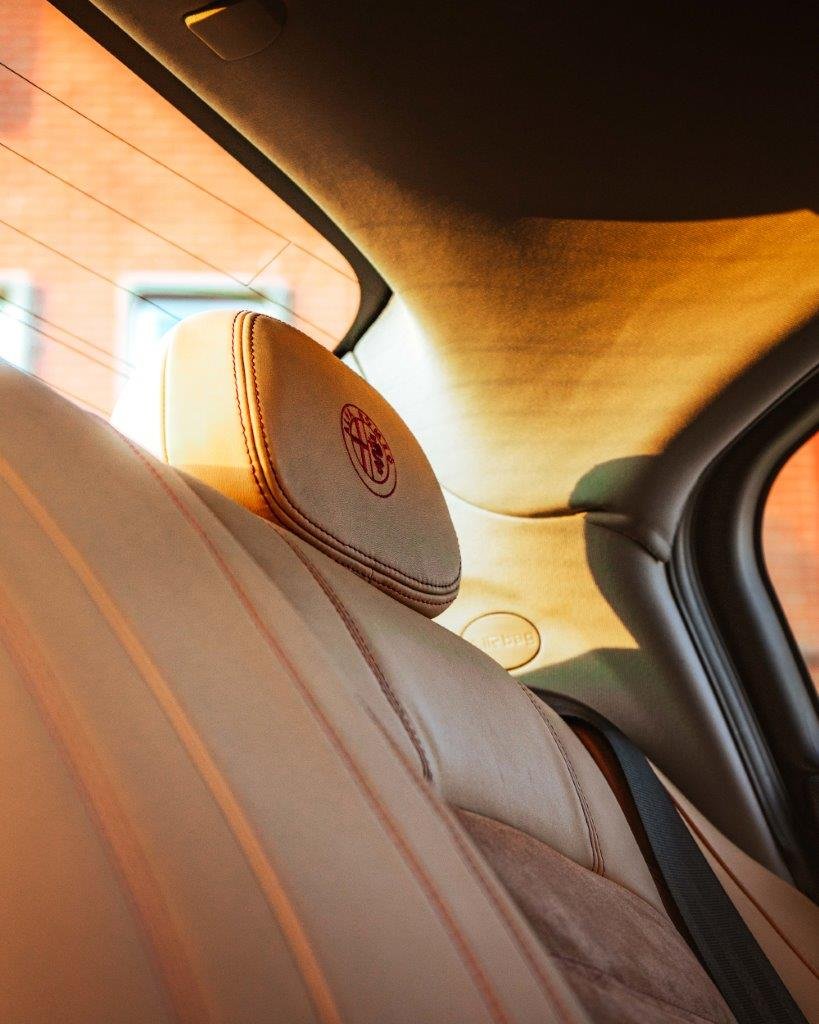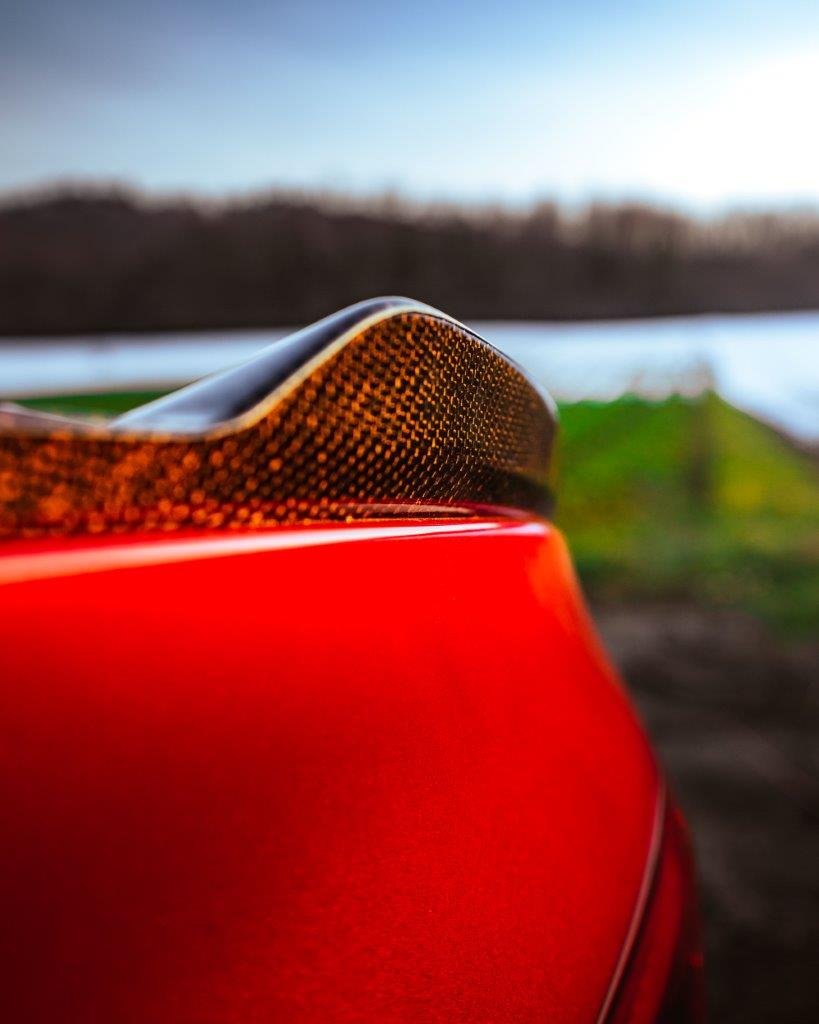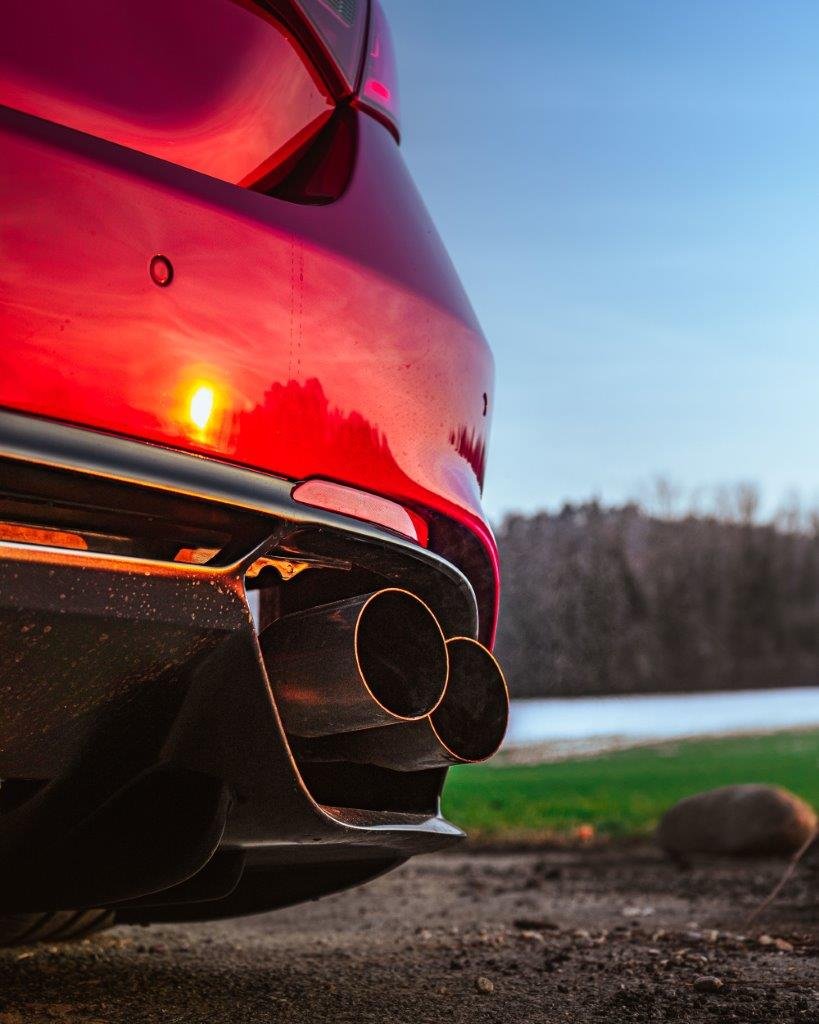THE ALPHA GIULIA
After revisiting the ‘80s with the 164, BTS Creativity is back with a fast-forward to the present day, getting its hands on the car that relaunched the Alfa Romeo brand globally: the Giulia.
You have already enjoyed a taste of it some time ago, when I got to shoot it in its natural habitat, the world of Stance-Cars.
Today we see it at home, at the base of the Turin Alps, where she shows all her beauty in a winter context, unusual for a show car, but which proves how much this car, despite being intended for events, maintains its living soul, as a purebred sportscar intact - although the aesthetic appearance is the very first thing that catches the eye.
A machine that will satisfy the onlookers when switched off and lowered in its parking position, but will take great care of its driver when turned on, since performance has absolutely not been sacrificed in favor of aesthetics.
So let's talk about the changes that make the design of this Giulia so unique.
The element that most catches the attention, at first glance, is undoubtedly the set of wheels that follows the line of the classic "teledial" style wheel so characteristic of Alfa Romeo, but in a much more aggressive guise, with a notable concavity that highlights this car’s three-dimensionality.
One-of-a-kind pieces, you may be thinking: yes, BTS Creawheels, the branch specialized in the design of tailor-made rims of the BTS ecosystem, has designed them specifically for this project, obtaining them from a block of raw aluminum, exactly as Michelangelo did with his marble David.
The look of the new bodykit, inspired by the Quadrifoglio, is decidedly more aggressive than the original, thanks to the widening of the track by 3 cm per side and an enrichment given by the carbon, used for the mirror caps, rear wing and the aerodynamic lip of the front bumper.
The most evident stylistic imprint in the work of BTS Creativity can be found, in fact, on the front section of the car: the "V" shaped motif of the scudetto has been redesigned following the stylistic feature of Walter De Silva, designer of the first series of 156, who imagined the scudetto to extend horizontally on the front grille, via the “whiskers” connecting to the front light groups.
The aesthetic work, as in the case of the 164, does not stop outside the vehicle, but continues inside, also derived from the top of the range Quadrifoglio version, but covered in leather and tan Alcantara normally used by Ferrari.
As we anticipated, however, the interventions did not stop at the aesthetic aspect, but were also done under the hood, in particular by bringing the 2.0 4-cylinder turbo petrol of the Giulia from 200 to 300 horsepower, demonstrating that the beauty of this car consists not only in looking at it but also in driving it.





